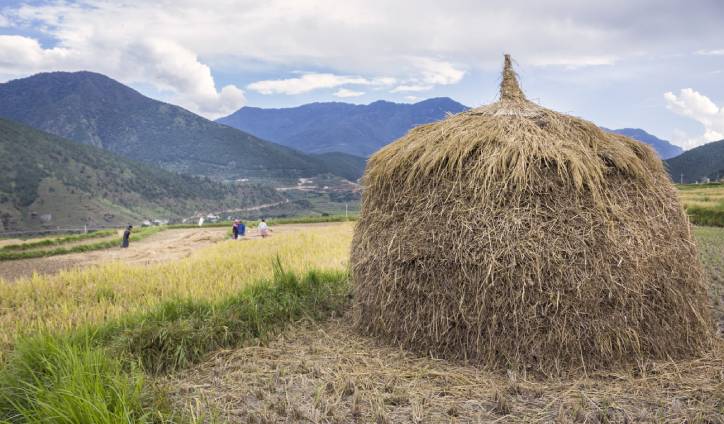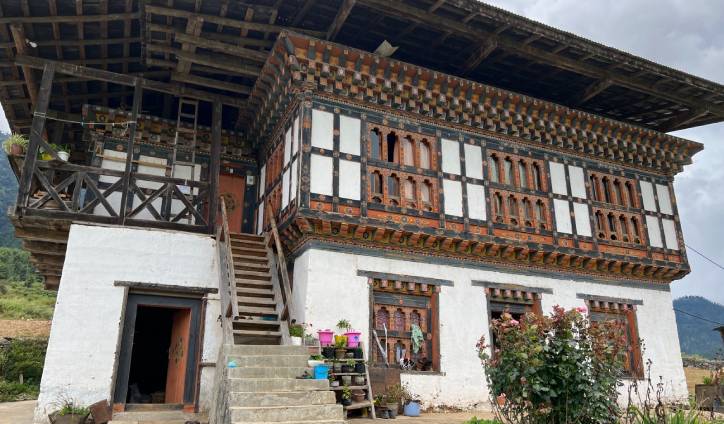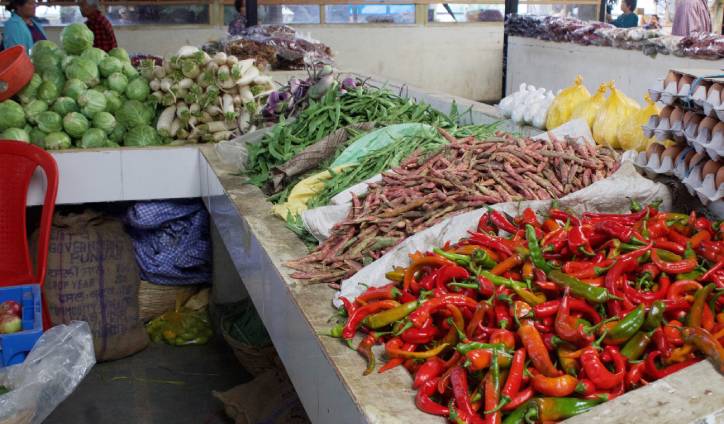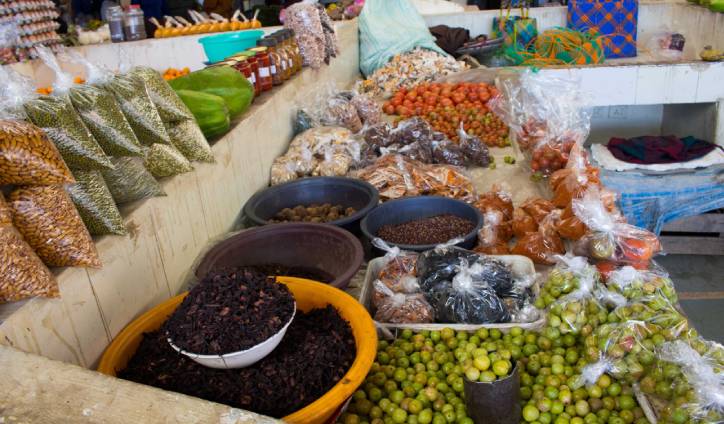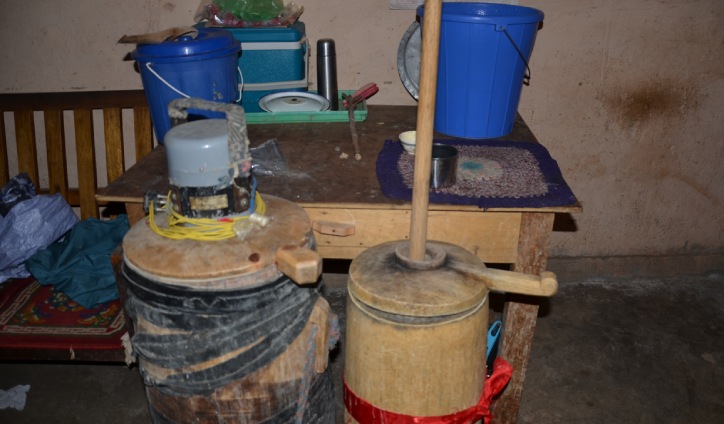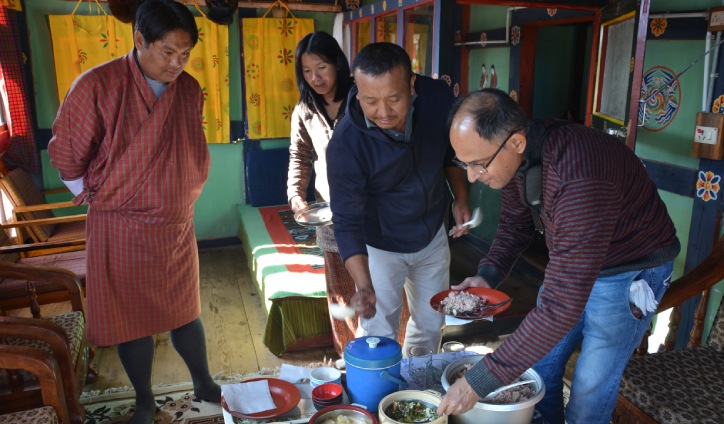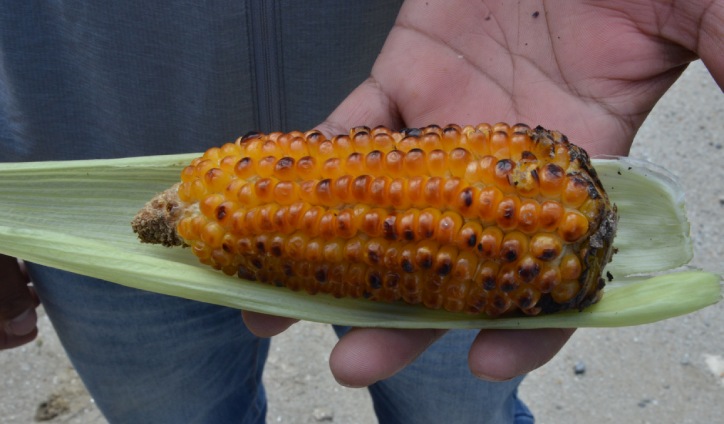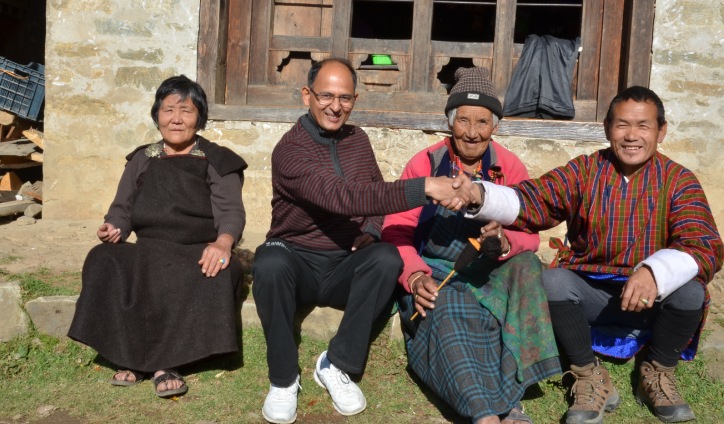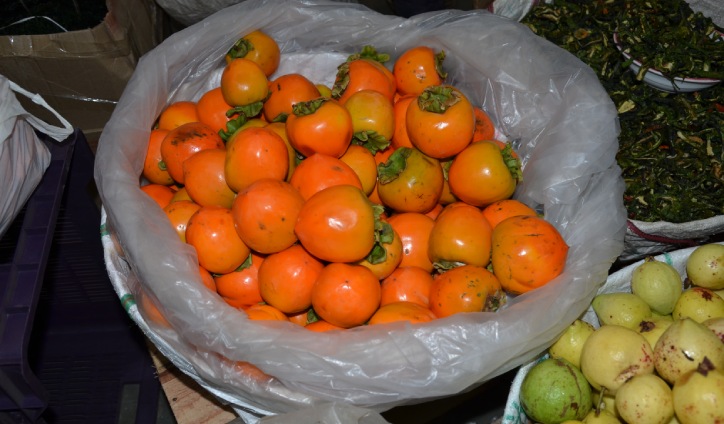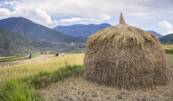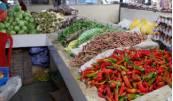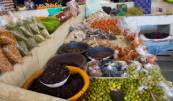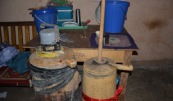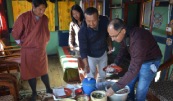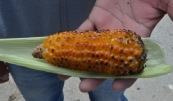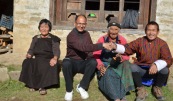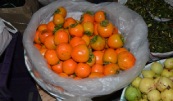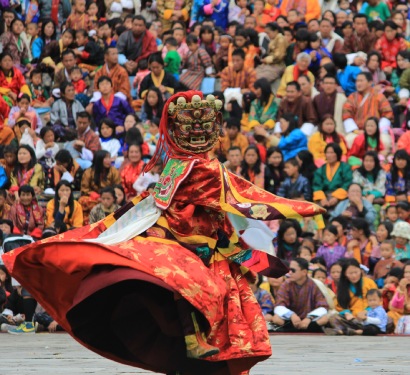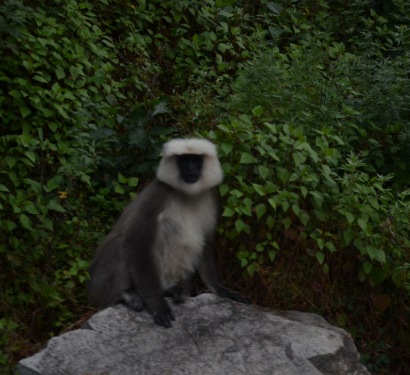Bhutan Rural Tourism - 7N8D
Theme: Rural Tourism
Experiences you will have: Water bodies or sports, Pure nature, Cycling, Soft trekking, Interacting with locals, High altitude/snow, Home stay, Local food
Destination: Bhutan.
Location in brief: Bhutan is a small neighbouring country of India.
Accommodation type: 3 Star, Village/farm stay.
Suitable Group size: Any
Check in 2:00 PM | Check out 11:00 AM
Food: Continental, Ethnic Local, Indian.
Hygiene: Maintained as per the laid down protocol and norms.
Terrain: Hilly.
Vehicle provided: Private. As per the request or pre-determined itinerary.
Climate: In the winter season, the high altitude points are covered with snow. At the foothills the climate is cool and bearable.
Summer (March to June) is the best season to visit as temperature is pleasant. Visiting in monsoon is a treat for eyes because of greenery and misty air and crowd is also very less.
Check out promotional video of Bhutan here:
Experiences you will have: Water bodies or sports, Pure nature, Cycling, Soft trekking, Interacting with locals, High altitude/snow, Home stay, Local food
Destination: Bhutan.
Location in brief: Bhutan is a small neighbouring country of India.
Accommodation type: 3 Star, Village/farm stay.
Suitable Group size: Any
Check in 2:00 PM | Check out 11:00 AM
Food: Continental, Ethnic Local, Indian.
Hygiene: Maintained as per the laid down protocol and norms.
Terrain: Hilly.
Vehicle provided: Private. As per the request or pre-determined itinerary.
Climate: In the winter season, the high altitude points are covered with snow. At the foothills the climate is cool and bearable.
Summer (March to June) is the best season to visit as temperature is pleasant. Visiting in monsoon is a treat for eyes because of greenery and misty air and crowd is also very less.
Check out promotional video of Bhutan here:
Experience breath-taking natural beauty at diverse places and also rich culture of Bhutan – The Land of Thunder Dragon. SAMSONA GETAWAYS, ensures that you not only see but feel the joy of what this mysterious land offers! Beautiful locales, moderately adventurous trails and a flavor of the local life and tastes. This package helps you to have a peep in rural Bhutan and lifestyle of rural Bhutanse people. Pure land, pure air, pure food…which you might not have experience before!
How to reach: Paro is the only International airport in Bhutan. Paro is connected to Kolkata and Delhi very conveniently. Mumbai-Paro flights are operational for limited period.
Bhutan is accessible by road as well. One can catch a flight to Bagdogra airport and then drive to Jaigaon 2:15 hours away which is a border town. From Jaigaon one can enter Phuensholling which is a border town from Bhutan side. From there one can reach Thimphu – capital of Bhutan – in 5:30 hours by road.
Central Bhutan and other main cities in Bhutan are connected by domestic flights.
Bhutan is accessible by road as well. One can catch a flight to Bagdogra airport and then drive to Jaigaon 2:15 hours away which is a border town. From Jaigaon one can enter Phuensholling which is a border town from Bhutan side. From there one can reach Thimphu – capital of Bhutan – in 5:30 hours by road.
Central Bhutan and other main cities in Bhutan are connected by domestic flights.
What you can do there?: Subject to availability of time and your interest, following activities may be undertaken at respective places, if not already covered. Some of the activities are chargeable:
Visit to -:
1. Local traditional village – Punakha or Paro
2. Hot stone bath - Paro
3. Centenary Farmers’ market - Thimphu
4. Traditional medicine Institute - Thimphu
5. Traditional paper making from Daphnia and Edgeworthia - Thimphu
6. Picnic lunch at river side - Punakha
7. Simply Bhutan – A museum built in style of traditional farmhouse - Thimphu
8. Wearing Bhutanese dress for photo – Thimphu or Paro
9. Bhutan Post – Thimphu
10. Archery
Nearby places of interest: West Bhutan is more frequented by tourists but Central Bhutan is one of the most beautiful places in the world. East Bhutan is untouched but tourists’ infrastructure is less developed there. In South Bhutan, there is sanctuary where one can get to see pure raw nature.
Visit to -:
1. Local traditional village – Punakha or Paro
2. Hot stone bath - Paro
3. Centenary Farmers’ market - Thimphu
4. Traditional medicine Institute - Thimphu
5. Traditional paper making from Daphnia and Edgeworthia - Thimphu
6. Picnic lunch at river side - Punakha
7. Simply Bhutan – A museum built in style of traditional farmhouse - Thimphu
8. Wearing Bhutanese dress for photo – Thimphu or Paro
9. Bhutan Post – Thimphu
10. Archery
Nearby places of interest: West Bhutan is more frequented by tourists but Central Bhutan is one of the most beautiful places in the world. East Bhutan is untouched but tourists’ infrastructure is less developed there. In South Bhutan, there is sanctuary where one can get to see pure raw nature.
Typical itinerary:
Rural Tourism in West Bhutan with day hikes: 8 days
Day 1: Arrive at Paro International Airport from Delhi, Calcutta, Bangkok or Kathmandu. Paro is situated in a beautiful valley at 2280 metres and is a fitting introduction to this charming kingdom. Your guide will meet you and take you on a short drive to your hotel. When you are ready, we will visit the Paro’s weekend market. You will see Bhutan’s unique local and organic products. The market is busiest on Sunday mornings but the vegetable stalls remain throughout the week. Feel free to interact with the people as most of the Bhutanese are sociable and welcoming. After visiting the market, you can also check out the archery ground where you will see locals playing archery match.
Overnight in Paro (Hotel).
Day 2: Paro to Punakha. In the morning drive approximately 4 hours to the old capital, Punakha, via Dochu La pass at 3050 metres. On the way, we will visit the National Centre for Organic Agriculture in Yusipang and explore the farmland of organic agriculture. Then continue on the way and stop at Dochu La pass for a hot drink and enjoy spectacular panoramic views of the Eastern Himalaya ranges. You will notice the change of climate and vegetation as we approach low-lying Punakha at 1250 metres. Take a pleasant walk for an hour or so across the terraced fields of Sopsokha village in Punakha. Here, you will see the farmers working in the fields for the cultivation of paddy. You can visit the farmlands and explore the cultivations of vegetables and red rice (staple grain in Bhutan). You can also communicate with the local farmers. Later visit a farmhouse to taste the red rice and local cuisine and to experience the traditional Bhutanese way of life.
Overnight in Punakha (Home stays or Farmhouse).
Day 3: After breakfast hike to Khamsum Yuelley Namgyel Chorten via the village of Yebisa. The walk starts from the suspension bridge below Khamsum Yuelley Namgyel Chorten. Hike at a gentle pace for around 10 minutes from the bridge through the paddy rice fields of Yebisa village. Then continue the hike for around 40 to 50 minutes up to the temple. The walk is still fairly gentle but there are some steeper parts. On the way, you will see farmers working wherein you can communicate and feel your hand in the Bhutanese farmland. From the top you will see a beautiful view of the valley and surrounding villages. The temple is 30 metres tall and is dedicated to the fifth King. After visiting the temple descend for around 30 minutes until you reach the suspension bridge where you will be picked up by your car. In the afternoon, you can visit the College of Natural Resources where students pursue both theory and practical of agriculture and animal husbandry in Bhutan. They will have good subject background and ideas about the same.
Overnight in Punakha (Home stays or Farmhouse).
Day 4: Drive approximately 3 hours to Gangtey at 2900 metres. Enjoy the views of the immense and remote Phobjikha valley and the black mountain ranges. Explore the valley where the villagers continue to live a traditional Bhutanese rural lifestyle. This is the site where black-necked cranes visit in their hundreds in November each year after spending the summer in Tibet. Afternoon, you may like to take the short Gangtey Nature Trail walk (1.5 hours approximately) from Gangtey Gompa through the Phobjikha valley. Then you can meet your host family for an overnight stay in a local farmhouse allowing you to experience traditional Bhutanese village life. Take the opportunity to try the restorative properties of a hot stone bath! You may like to learn some Dzongkha and listen to the narration of Bhutanese folktales by your host family.
Overnight in Gangtey (Home stays or Farmhouse).
Day 5: Today we return to Paro, a drive of approximately 6 hours, via Wangdi. Wangdi (also known as Wangdue Phodrang) was originally considered Bhutan’s secondary capital and it commands an important central position. Sadly Wangdi Dzong was gutted by fire in June 2012, destroying in a few hours not only a magnificent building that had stood proudly for hundreds of years, but also the painstaking work that had been in progress for many months to rebuild recent earthquake damage using traditional construction methods. You may like to visit the village of Rinchengang, near Wangdi. Established by Indian immigrants many centuries ago, Rinchengang has its own individual style and fascinating history. After a brief stop for lunch continue on your way.
Overnight in Paro (Hotel).
Day 6: This morning, you will visit the Damchena Dairy Group, which is under Dopshari geog in Paro. The group is formed to assist the farmers of Damchena to enhance dairy milk production and establish proper formal marketing channel for around 60 households of Damchena. You can see a lot of livestock farming in the village of Damchena. The local dairy farm guide will take you around to have a tour around the village. You can also have your lunch in the farmhouses. Then you can visit TD mushroom farm in Jeshigang in Dopshari geog in Paro. The mushroom farm focuses on the organic produce of different species of mushrooms, the owner of the farm will take you around the farm to see the species of mushroom. In the afternoon, you can visit National Museum and from here, take a leisurely 1-hour hike along the forested hillside to Zuri Dzong. The walk passes Gonsaka Lhakhang and then Zuri Dzong and provides wonderful views down over the valley and of Paro Dzong. Zuri Dzong dates from 1352 and is home to the valley’s local protector gods. Continue your walk down to the Uma Resort junction where you turn right towards Paro Dzong. You should have a good view of Paro Dzong and town. Your driver will be waiting at the Paro bridge to pick you up. Late afternoon, there will be time to visit some handicraft shops to purchase some souvenirs of your trip.
Overnight in Paro (Hotel).
Day 7: Take a day walk to the ‘Tiger’s Nest’, the sacred Taktshang monastery which clings to the rock face 900 metres above the valley floor. Guru Rinpoche is said to have flown to the site riding on a tigress. He subsequently meditated here for three months. It is one of Bhutan’s most holy sites and draws pilgrims not only from Bhutan but also from neighbouring Buddhist countries. You can have lunch at the Taktshang cafeteria from where you get a spectacular view of the monastery.
Overnight in Paro (Hotel).
Day 8: Early in the morning your guide will accompany you to the airport to see you off onto your flight and wish you Tashi Delek (goodbye and good luck).
Inclusions:
Accommodation
Meals as per the plan
Guide
Sightseeing fees
All applicable Taxes
SDF
Exclusions:
Flight tickets
Expenses of personal nature
Anything not mentioned in Inclusions.
Rural Tourism in West Bhutan with day hikes: 8 days
Day 1: Arrive at Paro International Airport from Delhi, Calcutta, Bangkok or Kathmandu. Paro is situated in a beautiful valley at 2280 metres and is a fitting introduction to this charming kingdom. Your guide will meet you and take you on a short drive to your hotel. When you are ready, we will visit the Paro’s weekend market. You will see Bhutan’s unique local and organic products. The market is busiest on Sunday mornings but the vegetable stalls remain throughout the week. Feel free to interact with the people as most of the Bhutanese are sociable and welcoming. After visiting the market, you can also check out the archery ground where you will see locals playing archery match.
Overnight in Paro (Hotel).
Day 2: Paro to Punakha. In the morning drive approximately 4 hours to the old capital, Punakha, via Dochu La pass at 3050 metres. On the way, we will visit the National Centre for Organic Agriculture in Yusipang and explore the farmland of organic agriculture. Then continue on the way and stop at Dochu La pass for a hot drink and enjoy spectacular panoramic views of the Eastern Himalaya ranges. You will notice the change of climate and vegetation as we approach low-lying Punakha at 1250 metres. Take a pleasant walk for an hour or so across the terraced fields of Sopsokha village in Punakha. Here, you will see the farmers working in the fields for the cultivation of paddy. You can visit the farmlands and explore the cultivations of vegetables and red rice (staple grain in Bhutan). You can also communicate with the local farmers. Later visit a farmhouse to taste the red rice and local cuisine and to experience the traditional Bhutanese way of life.
Overnight in Punakha (Home stays or Farmhouse).
Day 3: After breakfast hike to Khamsum Yuelley Namgyel Chorten via the village of Yebisa. The walk starts from the suspension bridge below Khamsum Yuelley Namgyel Chorten. Hike at a gentle pace for around 10 minutes from the bridge through the paddy rice fields of Yebisa village. Then continue the hike for around 40 to 50 minutes up to the temple. The walk is still fairly gentle but there are some steeper parts. On the way, you will see farmers working wherein you can communicate and feel your hand in the Bhutanese farmland. From the top you will see a beautiful view of the valley and surrounding villages. The temple is 30 metres tall and is dedicated to the fifth King. After visiting the temple descend for around 30 minutes until you reach the suspension bridge where you will be picked up by your car. In the afternoon, you can visit the College of Natural Resources where students pursue both theory and practical of agriculture and animal husbandry in Bhutan. They will have good subject background and ideas about the same.
Overnight in Punakha (Home stays or Farmhouse).
Day 4: Drive approximately 3 hours to Gangtey at 2900 metres. Enjoy the views of the immense and remote Phobjikha valley and the black mountain ranges. Explore the valley where the villagers continue to live a traditional Bhutanese rural lifestyle. This is the site where black-necked cranes visit in their hundreds in November each year after spending the summer in Tibet. Afternoon, you may like to take the short Gangtey Nature Trail walk (1.5 hours approximately) from Gangtey Gompa through the Phobjikha valley. Then you can meet your host family for an overnight stay in a local farmhouse allowing you to experience traditional Bhutanese village life. Take the opportunity to try the restorative properties of a hot stone bath! You may like to learn some Dzongkha and listen to the narration of Bhutanese folktales by your host family.
Overnight in Gangtey (Home stays or Farmhouse).
Day 5: Today we return to Paro, a drive of approximately 6 hours, via Wangdi. Wangdi (also known as Wangdue Phodrang) was originally considered Bhutan’s secondary capital and it commands an important central position. Sadly Wangdi Dzong was gutted by fire in June 2012, destroying in a few hours not only a magnificent building that had stood proudly for hundreds of years, but also the painstaking work that had been in progress for many months to rebuild recent earthquake damage using traditional construction methods. You may like to visit the village of Rinchengang, near Wangdi. Established by Indian immigrants many centuries ago, Rinchengang has its own individual style and fascinating history. After a brief stop for lunch continue on your way.
Overnight in Paro (Hotel).
Day 6: This morning, you will visit the Damchena Dairy Group, which is under Dopshari geog in Paro. The group is formed to assist the farmers of Damchena to enhance dairy milk production and establish proper formal marketing channel for around 60 households of Damchena. You can see a lot of livestock farming in the village of Damchena. The local dairy farm guide will take you around to have a tour around the village. You can also have your lunch in the farmhouses. Then you can visit TD mushroom farm in Jeshigang in Dopshari geog in Paro. The mushroom farm focuses on the organic produce of different species of mushrooms, the owner of the farm will take you around the farm to see the species of mushroom. In the afternoon, you can visit National Museum and from here, take a leisurely 1-hour hike along the forested hillside to Zuri Dzong. The walk passes Gonsaka Lhakhang and then Zuri Dzong and provides wonderful views down over the valley and of Paro Dzong. Zuri Dzong dates from 1352 and is home to the valley’s local protector gods. Continue your walk down to the Uma Resort junction where you turn right towards Paro Dzong. You should have a good view of Paro Dzong and town. Your driver will be waiting at the Paro bridge to pick you up. Late afternoon, there will be time to visit some handicraft shops to purchase some souvenirs of your trip.
Overnight in Paro (Hotel).
Day 7: Take a day walk to the ‘Tiger’s Nest’, the sacred Taktshang monastery which clings to the rock face 900 metres above the valley floor. Guru Rinpoche is said to have flown to the site riding on a tigress. He subsequently meditated here for three months. It is one of Bhutan’s most holy sites and draws pilgrims not only from Bhutan but also from neighbouring Buddhist countries. You can have lunch at the Taktshang cafeteria from where you get a spectacular view of the monastery.
Overnight in Paro (Hotel).
Day 8: Early in the morning your guide will accompany you to the airport to see you off onto your flight and wish you Tashi Delek (goodbye and good luck).
Inclusions:
Accommodation
Meals as per the plan
Guide
Sightseeing fees
All applicable Taxes
SDF
Exclusions:
Flight tickets
Expenses of personal nature
Anything not mentioned in Inclusions.
House Rules:
• Right of admission reserved.
• All homestays have their own house rules and it will be shared post confirmation.
• Homestays are local area accommodations, therefore, it is important for tourists to behave properly with the locals hosting and serving them.
• Activities mentioned above may change due to change in weather conditions and otherwise.
• Tourists are informed to take care of the nature and use dustbins to dispose the trash.
• Water is always scarce in arid areas. So, please conserve water at all the homestays.
• The charges for activities shall be extra.
• Confirmations are subject to availability.
• All communications should be with SAMSONA GETAWAYS team only or authorized representative of SAMSONA GETAWAYS.
• The locations could be exotic and may have difficult terrains. Please prepare well for the locations with respect to weather conditions. SAMSONA GETAWAYS is not responsible for any injury or damage due to tough environmental conditions. Few sites need trek to reach, so please read about the property and location carefully.
• The pictures shown in the website are for illustration purpose and actual as far as possible.
• Please plant a TREE while you stay there, weather permitting. Contact the Homestay owner for assistance.
• Please try to reach our locations by day light.
• Reach out to us for any clarification.
• Keep a torch and lighter handy, in case of load shedding and snow fall.
Cancellation Policy:
High Season and Peak Season time (1st March to 15th July) & (20th Dec to 2nd Jan) & Diwali holidays
• Cancellation by 30 days before arrival: 50% refund
• Cancellation by 15 days before arrival: 25% refund
• Cancellation after 15days before arrival: No refund
Off season (Other than the dates above):
• Cancellation by 30 days before arrival: 50% refund
• Cancellation by 15 days before arrival: 25% refund
• Cancellation by 7 days before arrival: 10% refund
• Cancellation after 7 days before arrival: No refund.
• Right of admission reserved.
• All homestays have their own house rules and it will be shared post confirmation.
• Homestays are local area accommodations, therefore, it is important for tourists to behave properly with the locals hosting and serving them.
• Activities mentioned above may change due to change in weather conditions and otherwise.
• Tourists are informed to take care of the nature and use dustbins to dispose the trash.
• Water is always scarce in arid areas. So, please conserve water at all the homestays.
• The charges for activities shall be extra.
• Confirmations are subject to availability.
• All communications should be with SAMSONA GETAWAYS team only or authorized representative of SAMSONA GETAWAYS.
• The locations could be exotic and may have difficult terrains. Please prepare well for the locations with respect to weather conditions. SAMSONA GETAWAYS is not responsible for any injury or damage due to tough environmental conditions. Few sites need trek to reach, so please read about the property and location carefully.
• The pictures shown in the website are for illustration purpose and actual as far as possible.
• Please plant a TREE while you stay there, weather permitting. Contact the Homestay owner for assistance.
• Please try to reach our locations by day light.
• Reach out to us for any clarification.
• Keep a torch and lighter handy, in case of load shedding and snow fall.
Cancellation Policy:
High Season and Peak Season time (1st March to 15th July) & (20th Dec to 2nd Jan) & Diwali holidays
• Cancellation by 30 days before arrival: 50% refund
• Cancellation by 15 days before arrival: 25% refund
• Cancellation after 15days before arrival: No refund
Off season (Other than the dates above):
• Cancellation by 30 days before arrival: 50% refund
• Cancellation by 15 days before arrival: 25% refund
• Cancellation by 7 days before arrival: 10% refund
• Cancellation after 7 days before arrival: No refund.
